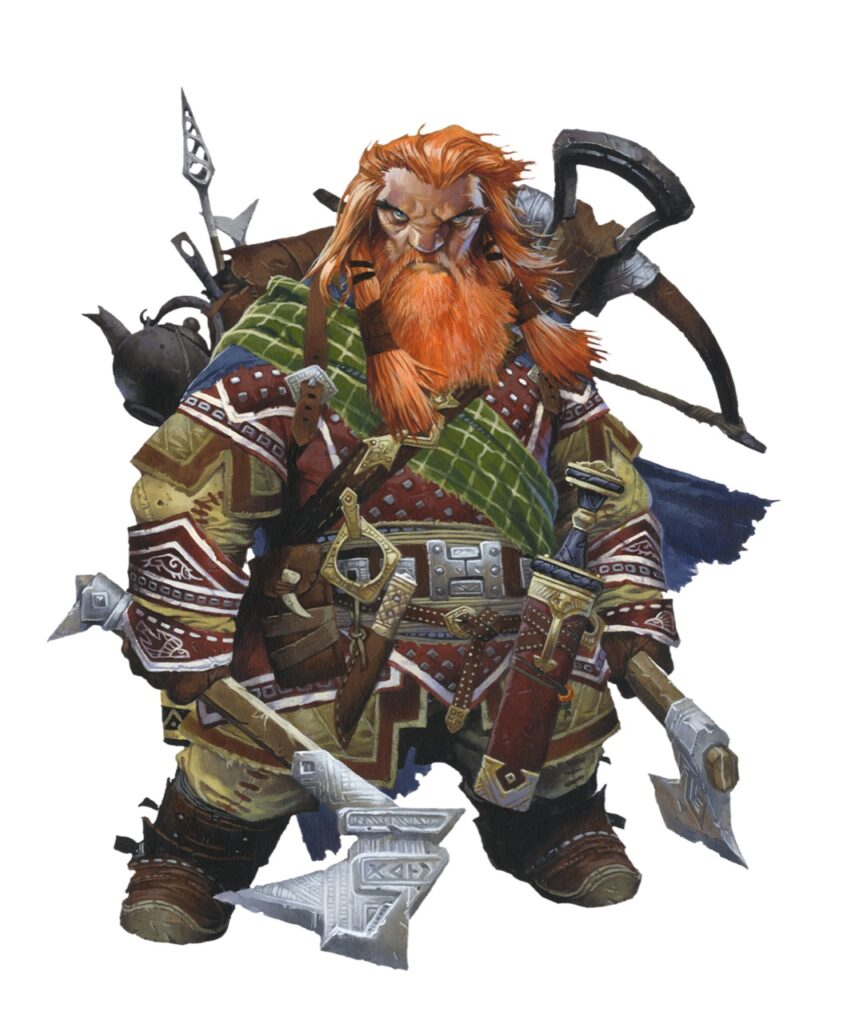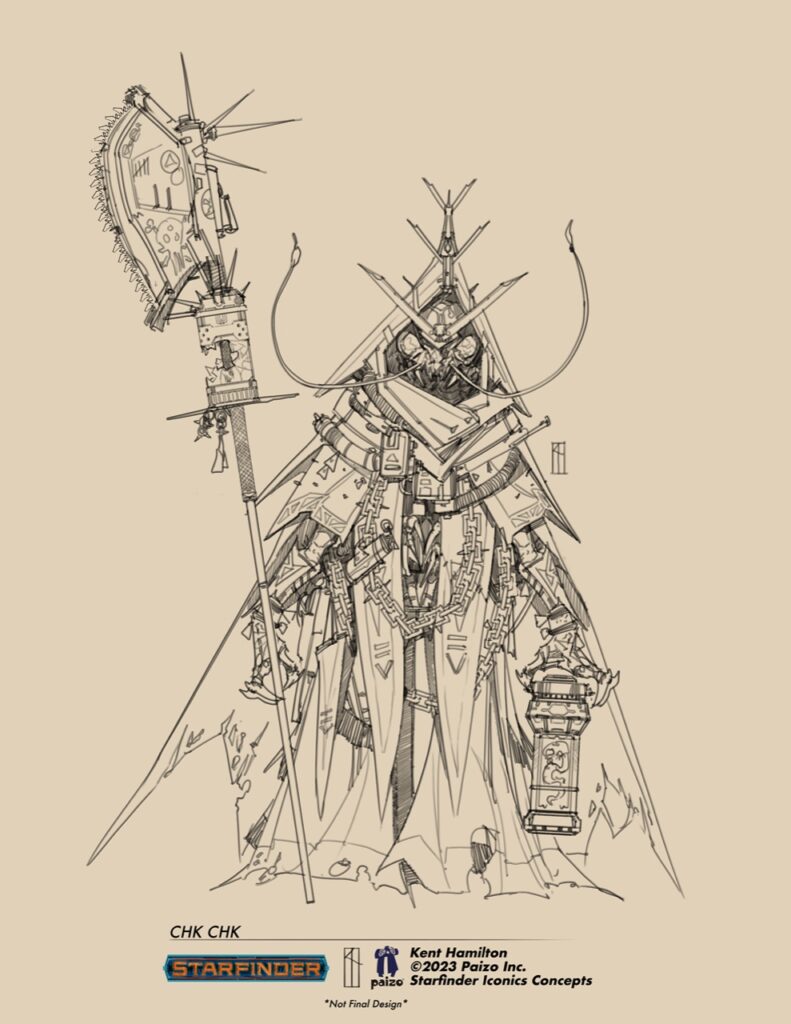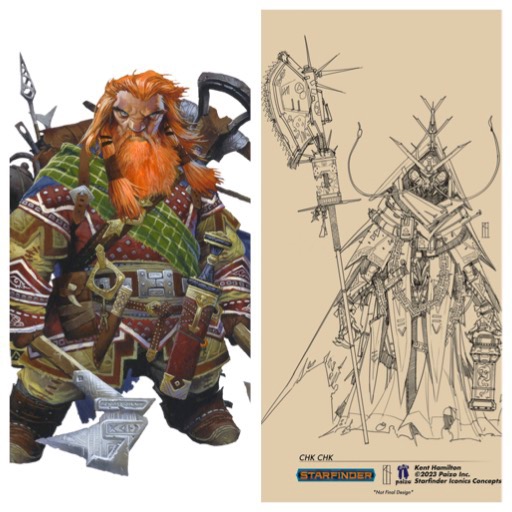
*
Full Disclosure: Nor I, or anyone else affiliated with the 5D Pop Culture Website have received any free content, payment or other forms of renumeration from the creators of the subject of this press release. The content below is quite simply something in the world of TTRPG that caught our geeky eye and so we wanted to share with the community. If you love it, well, fab. If you don’t, well that’s your prerogative too…..
*
PRESS RELEASE SOURCE: PAIZO.COM
*
Pathfinder Player Core Preview: The Remastered Ranger
*
The ranger is a wilderness warrior, a character who’s good with weapons, good with animals, good in the wilds, and who can sprinkle just a little bit of magic into their repertoire if they feel like it. By and large, this is one of the classes that most people consider to be solid and effective, good at its role both thematically and mechanically. While we’re not inclined to fix things that aren’t broken, the ranger being a generally solid and effective class pre-Remaster didn’t mean we didn’t have some notable opportunities to go in and spruce a few things up, improving the general progression and experience. I’ll be talking about a few of those things here.
*
The magical element of the ranger is often one of its more understated aspects, but it’s one people really care about. Originally, ranger focus spells, called warden spells, were added to the class after the fact in the Advanced Player’s Guide, and one of the downsides to this was that since they weren’t built into the class originally, the class didn’t have mechanisms in place to ensure that the ranger’s spellcasting proficiency improved as the character leveled up. In the Remaster, we’ve baked the spellcasting progression directly into the ranger’s core chassis, ensuring that class features like Ranger Expertise and Masterful Hunter naturally progress the ranger’s spellcasting proficiency all the way up to master. We also streamlined the feats that the ranger uses to accrue their warden spells and recategorized the spells into easily referenced groups; the 1st-level Initiate Warden feat allows you to choose from any of the initial warden spells (which are all of the ranger’s focus spells that start at 1st rank), and there are regularly paced feats all the way up to the 10th-level Peerless Warden feat that gives you access to the strongest ranger focus spells available, which are focus spells that all start at 5th rank.
*

*
Along with the general improvements to spellcasting, we also added some new feats to help make certain builds pop and shine a bit more brightly. Precision rangers who like combining warden spells with big shots from crossbows will likely appreciate the Warden’s Reload feat shown below, which allows them to reload as a free action once per round when they cast a warden spell; this combines nicely with staple spells like gravity weapon to increase your weapon damage or spells like ranger’s bramble that damage and immobilize your foes, making them easy targets for you to pick off from a safe distance!
*
Ranger snares are going to be the one thing not appearing in Player Core that were originally available to the class; snares were kind of the least satisfying of the options available to the ranger and the least used options, so we’ve pulled those out of the class. They’ll be appearing in Player Core 2 alongside the Snarecrafter archetype, with a much-needed facelift.
*
*
There were also a few places where we had feats that many people saw as being taxes that you had to pay to accomplish a specific flavor. For example, the Crossbow Ace feat that originally appeared in the Pathfinder Core Rulebook was written under the assumption that all crossbows were simple weapons, and so it provided a damage bonus that essentially converted those simple weapons into martial weapons whenever you took certain actions like using Hunt Prey or reloading. This ended up having a couple issues. On the one hand, the damage bonus was big enough that the feat felt like a “must have” if you were going to be using a crossbow, crowding out build versatility and other options. On the other hand, the feat was actively fighting with the ranger’s play loop; if you were Tracking your prey before combat began and you had your crossbow in hand loaded and ready for the fight, you didn’t have any way to get your damage bonus! Playing the character the way that everything in the game was telling you to play your character was leading to situations where you couldn’t use the abilities you were supposed to be using in the situations you were supposed to be using them.
*


*
To address those issues, we added a martial crossbow, the arbalest, so that you could expect a more reasonable damage output without needing to pay a feat tax. While we had the patient open on crossbows, we also adjusted them to make them their own weapon group, with a damage-oriented critical specialization that deals 1d8 persistent bleed damage plus additional bleed damage equal to the weapon’s item bonus to attack rolls. If you preferred the bow critical specialization they had before, you can add that back onto your crossbow with the grievous rune, which makes it so that getting a critical hit with your crossbow when you have the critical specialization adds the bleed damage and also pins the target to an adjacent surface until they Interact to pull the bolt free.
*
With the basic damage outlay on crossbows addressed via the core weapon system, we were able to make reloading more fun and tactical with the feat space that was opened up. In addition to options like the Warden’s Reload feat I mentioned previously, we’ve also reworked Crossbow Ace and similar options to function more like the gunslinger’s various reload abilities, giving you additional things you can do to reinforce your playstyle with reload weapons while improving your ability to achieve the kind of cinematic tactical maneuvering that the class was always aiming to provide.
*
Thanks for tuning in and stay tuned for upcoming looks at the rest of what we’ve got coming to you in the Pathfinder Remaster.
*
Remaster project with a look at the updated ranger, appearing in Pathfinder Player Core this November.
*
*
Starfinder releases its second Field Test!
Hey everyone! Welcome to the exciting reveal of the second Starfinder Second Edition Field Test.
If you didn’t already know, there’s a new edition of Starfinder on the way. Paizo have previously released a Field Test document that highlighted a work-in-progress snapshot of the new soldier class, plus some new firearms. Today they’re taking a similar approach and releasing the first five levels of the new mystic class, along with a handful of Starfinder 2e spells.
*
Mystic is a class that we’re really interested in getting more feedback on. As a spontaneous caster, its connections currently give it access to the divine and primal traditions. However, regardless of the chosen connection, the mystic gains powerful healing in the form of its vitality network ability. Mystics can further customize how they use their vitality network through their connection and feat choices, but you’ll have to download the Field Test to learn more!
*
In our playtests, the mystic has been exceptionally efficient as a healer, in part because its powerful vitality network ability has the potential to restore large sums of Hit Points as a single action. However, the mystic is also a class that manages its resources, either doling out Hit Points in smaller chunks or saving up for a big heal that depletes the vitality network entirely. We found that in challenging encounters, the mystic might easily deplete their vitality network and need to decide whether or not keeping allies alive at low Hit Points is worth the risk.
*

*
This new rendition of the mystic relies on its connection and forming bonds with fellow party members. It shares a lot of the same design space as the First Edition mystic, just reworked to fit the Second Edition engine and to mesh in a broader sense with the setting. We’re taking some steps to allow for mystics to be more directly connected to deities, which wasn’t entirely possible in the past. This means that a player can create a mystic character who is a priest or follower of a deity and gain many of the same benefits that a cleric might enjoy. Don’t worry, mystics won’t be required to worship a deity.
*
Along with the mystic, we’re also including some new spells for everyone to check over. Some of these are spells we mentioned in our prior Field Test, now with actual stats included. In addition, we’ve included some fun thematic spells like doom scroll and motivating ringtone, which really show what Starfinder has to offer in terms of a truly different type of spellcasting—not to mention the modern and futuristic themes we want to explore with our new rules. As always, we’re excited to see fan feedback on our work and can’t wait to see the thoughts people share with us in the coming weeks.
*
Stay tuned for our upcoming Paizo Live, where members of the Starfinder team will further discuss the Field Test, as well as give some hints on exciting up-and-coming content for the new edition of Starfinder.
*
Subscribing to the 5D Pop Culture Website
If you would like to subscribe (for free) to the 5D Pop Culture Website and keep up to date with our content then just go to the bottom of this page, submit your email & click subscribe!
5D Reviews
If you are a content creator and interested in having your work reviewed here on the 5D Pop Culture Website then contact us at 5DPopCulture@gmail.com
*

*


